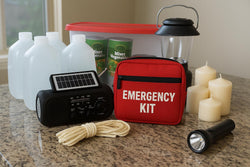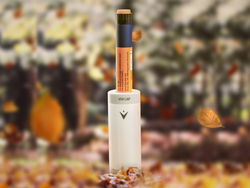Tempramed Blog
Hurricane Season & Diabetes: Protecting Your Insulin During Power Outages

Hurricane season brings unique challenges for people with diabetes, with power outages threatening insulin storage and emergency situations complicating blood sugar management. With hurricanes becoming more frequent and intense, proper preparation can mean the difference between stable diabetes control and life-threatening complications.
The Hurricane-Diabetes Emergency Reality
Average hurricane power outage: 5-14 days
Insulin refrigeration requirement: 36-46°F continuously
Room temperature insulin lifespan: 28 days maximum
Emergency room visits during hurricanes: 40% increase for diabetes complications
When Hurricane Ian struck Florida in 2022, thousands of people with diabetes lost insulin to power outages, creating a secondary health emergency amid the storm's destruction.
Pre-Hurricane Preparation Checklist
72-Hour Emergency Kit
-
Extra insulin: 7-14 day supply beyond normal needs
-
Blood glucose supplies: Test strips, lancets, extra meter
-
Emergency medications: Glucagon, ketone strips, prescription drugs
-
Non-perishable snacks: Peanut butter, crackers, glucose tablets
-
Medical documentation: Prescriptions, insurance cards, emergency contacts
Power-Independent Storage Solutions
Traditional methods (limited effectiveness):
-
Clay pots with wet towels (4-6 hours protection)
-
Insulated bags with ice packs (8-12 hours with replacement ice)
-
Buried containers (inconsistent temperature control)
Professional solutions: Temperature-controlled storage devices like the VIVI Cap provide 24-48 hours of protection without external power, using space-grade Phase Change Materials that automatically regulate insulin temperature.
During the Storm: Emergency Management
Blood Sugar Monitoring Intensification
Stress, irregular eating, and limited activity during hurricanes significantly impact blood glucose levels. Check levels every 2-4 hours, even during overnight shelter periods.
Medication Adjustments
-
Document all doses with timestamps
-
Adjust for stress-induced highs in consultation with healthcare providers
-
Prepare for delayed meals with flexible insulin timing
-
Monitor for ketones if blood sugar exceeds 250 mg/dL
Storage Without Refrigeration
If power fails and backup storage isn't available:
-
Keep insulin as cool as possible using insulated containers
-
Avoid direct sunlight and heat sources
-
Use room temperature insulin first before opening refrigerated supplies
-
Mark expiration dates carefully for temperature-exposed insulin
-
Replace questionable insulin as soon as possible post-storm
Post-Hurricane Recovery
Immediate Assessment (First 24 Hours)
-
Check insulin appearance for clumping, discoloration, or particles
-
Test blood glucose frequently to identify storage-damaged insulin
-
Contact healthcare providers for guidance on medication replacement
-
Document insurance claims for storm-damaged medical supplies
Supply Replenishment
Hurricane aftermath often disrupts pharmacy operations and supply chains. Contact multiple pharmacies, consider mail-order options, and work with insurance providers for emergency refills of storm-damaged medications.
Regional Considerations
Gulf Coast Preparedness
Frequent hurricane threats require year-round emergency supplies and proven storage solutions rather than last-minute preparation.
Inland Flooding Areas
Even areas not directly hit by hurricanes face extended power outages from flooding, making backup insulin storage equally critical.
Evacuation Planning
-
Portable storage solutions for travel to shelters or relatives
-
Documentation copies stored in waterproof containers
-
Emergency contact lists including endocrinologists and pharmacies
-
Transportation considerations for refrigerated medical supplies
Cost-Benefit Analysis
Hurricane emergency kit investment: $200-$400
Professional insulin storage: $150-$300
Insulin replacement after power outage: $500-$2,000+
Emergency medical treatment: $1,000-$10,000+
Preparation costs significantly less than emergency replacement and treatment, while providing peace of mind during stressful storm events.
Technology Solutions
Modern insulin storage technology eliminates power dependency while providing superior protection compared to traditional methods. Professional devices offer:
-
Extended protection periods lasting days, not hours
-
Automatic temperature regulation without user intervention
-
Compact, portable design suitable for evacuation scenarios
-
No maintenance requirements during emergency situations
Taking Action
Hurricane preparedness for diabetes requires planning beyond basic emergency kits. Invest in reliable, power-independent insulin storage and develop comprehensive emergency management protocols before the next storm threatens your area.
Start today: Assess your current hurricane preparedness, invest in professional insulin protection, and create detailed emergency management plans with your healthcare team.
Don't let the next hurricane catch you unprepared, your diabetes management depends on planning that happens long before the storm arrives.




